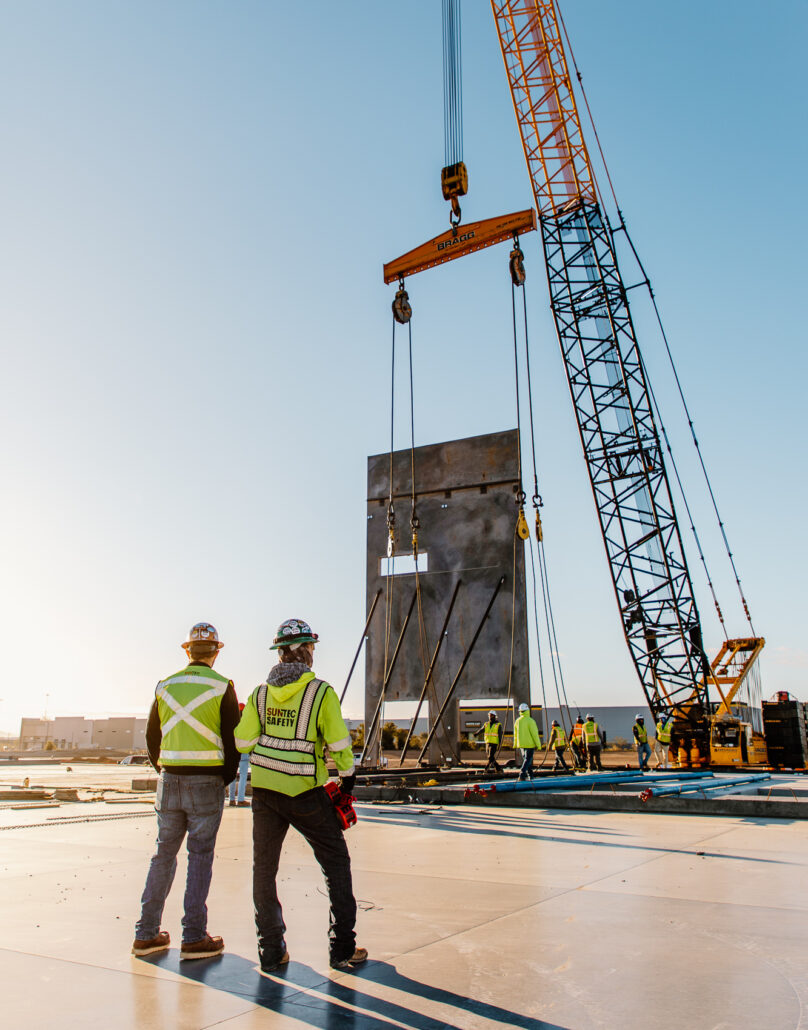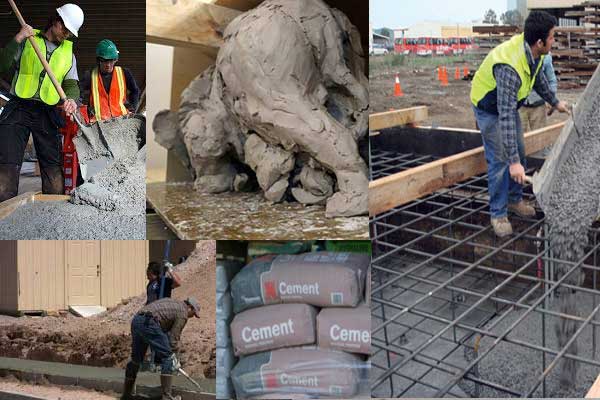The Necessary Function of Concrete Structure in Structural Stability and Long Life
When it concerns developing a residential or commercial property, the structure is extra critical than you may believe. Concrete foundations supply unrivaled toughness and durability, ensuring your structure can stand up to different environmental obstacles. Without a solid base, you run the risk of possible concerns like changing or fracturing, which can compromise safety and security and value. Comprehending the subtleties of concrete foundations can be the secret to preserving your financial investment for many years to find. What should you consider following?
Recognizing the Value of Concrete Foundations
Concrete foundations are vital to the total stability of any structure, as they supply the vital assistance required to stand up to numerous loads and ecological problems. When you think of developing a home or a business room, the foundation is the initial thing you need to take into consideration. It functions as a barrier against moisture, shielding your residential property from water damages. A well-placed concrete structure additionally stops settling and shifting, which can cause splits in walls and floorings. You'll desire to assure that the structure is appropriately created and strengthened, as this impacts the longevity of your building. In addition, a solid structure can boost power effectiveness by decreasing air leakages. Keep in mind, overlooking the significance of a concrete foundation can bring about expensive repair work down the line. Investing in a top quality foundation upfront is vital for the integrity and longevity of your structure.
Benefits of Concrete Structures for Architectural Honesty
While many factors add to a structure's structural honesty, concrete structures provide unparalleled resilience and stamina. You'll appreciate that concrete can stand up to extreme climate condition, withstanding both dampness and temperature level changes. This resilience suggests your framework is less most likely to experience fracturing or shifting in time, which can endanger its safety.Additionally, concrete's intrinsic weight offers a strong base, preventing movement during natural occasions like earthquakes or floods. When you select a concrete foundation, you're also choosing reduced maintenance; unlike wood, it won't rot or draw in bugs, saving you money and time in repairs.Moreover, concrete's fire resistance supplies included safety and security, ensuring your framework can sustain high temperature levels without substantial damage. In general, purchasing a concrete foundation implies you're prioritizing the lasting security and honesty of your structure, making it a smart option for any kind of construction project.
Usual Kinds Of Concrete Foundations
When it concerns constructing foundations, understanding the common types of concrete structures can help you make notified choices for your project. One of the most widespread types include slab-on-grade, crawl area, and complete cellar foundations.A slab-on-grade foundation is a simple, cost-efficient option, where a thick concrete slab is poured directly on the ground. This type functions well in cozy environments, as it minimizes warm loss.Crawl space structures boost the home a little over ground, enabling for air flow and accessibility to plumbing and electrical systems. This layout can help stop wetness issues.Full basement foundations use additional living or storage room while providing exceptional architectural support. They require more excavation and are commonly made use of in colder environments to stop frost heave.
Variables to Think About When Designing a Concrete Foundation

Finest Practices for Putting Up Concrete Foundations
When you're setting up a concrete foundation, appropriate site preparation is important to guarantee stability (West Coast GE Concrete contractors). You'll also require to comprehend support strategies to enhance strength and sturdiness. Ultimately, don't neglect the curing procedure, as it plays an essential role in accomplishing a strong structure
Website Prep Work Relevance
It might appear simple, correct site prep work is important for assuring a strong and long lasting concrete foundation. Beginning by getting rid of the area of any type of particles, greenery, or organic product that might compromise the foundation's stability. Next off, examine the soil type and compaction; you may require to dig deep into or include materials to create a stable base. Degree the ground to ensure even weight distribution and avoid settling concerns in the future. Installing correct drainage systems is likewise vital to avoid water accumulation, which can compromise the structure gradually. Mark out the foundation's measurements properly to guide the pouring procedure. By following these actions, you'll set the stage for an effective concrete structure that stands the examination of time.
Reinforcement Strategies Described
When the website is properly prepared, the next action in assuring a tough concrete structure includes implementing efficient reinforcement strategies. You should begin by utilizing steel rebar, which supplies tensile stamina and assists prevent fracturing. Lay the rebar in a grid pattern, seeing to it it rises making use of spacers to maintain correct protection. In addition, think about using cord mesh for extra assistance, especially in areas subject to hefty tons. Don't forget to connect x8x16 concrete block the rebar crossways safely with wire. For bigger foundations, fiber reinforcement can enhance durability, minimizing the risk of shrinking splits. Constantly adhere to neighborhood structure codes and guidelines to make certain compliance. By using these reinforcement techniques, you'll significantly boost your foundation's toughness and long life, laying a strong foundation for your structure.
Healing Process Basics
To ensure your concrete structure cures correctly, it is necessary to preserve ample dampness and temperature level conditions quickly after putting. Start by covering the surface with a damp burlap or plastic sheeting to retain wetness. This maintains the concrete hydrated, stopping cracks and making certain toughness. You must also keep an eye on the temperature; ideal treating conditions are between 50 ° F and 90 ° F. If it's as well warm, mist the surface regularly to avoid quick dissipation. For winter, take into consideration making use of insulating coverings to maintain warmth. Go for a treating duration of a minimum of 7 days, as this is important for ideal toughness development. By complying with these ideal practices, you'll boost your foundation's longevity and long life, making sure structural stability for many years to come.
Maintenance of Concrete Structures for Long Life
To maintain your concrete foundation strong and enduring, normal assessments are vital. You ought to also ensure reliable water drainage options remain in area to stop water damages. If you identify any kind of splits, resolving them immediately will conserve you from larger problems down the line.

Regular Assessments and Analyses
While normal evaluations and analyses could appear like a chore, they're necessary for maintaining the honesty of your concrete structure. By routinely looking for splits, changes, or indicators of wear, you can capture prospective issues before they escalate into costly repair work. Look for any type of water merging around the foundation or uncommon settling, as these can signal underlying problems. It's also smart to monitor any kind of changes in your home's structure, like doors that stick or windows that don't open efficiently. Maintaining a document of your inspections helps track modifications gradually, enabling aggressive upkeep. Inevitably, these assessments assure your foundation stays steady, sustaining the longevity and safety of your whole structure. Don't ignore this important facet of homeownership!
Reliable Drain Solutions
Routine evaluations can reveal concerns like drain troubles that could jeopardize your concrete foundation's security. To stop water build-up, guarantee your seamless gutters and downspouts straight water away from the structure. Installing French drains can successfully reroute surface area and groundwater, decreasing stress on your foundation walls. Additionally, rating the soil around your home assists assure that water flows away, instead than merging near your foundation.Consider utilizing sump pumps in locations susceptible to flooding, as they proactively remove excess water. Regularly check for obstructions in drainage systems and clear them without delay. You'll shield your foundation's integrity and long life by taking these aggressive actions. Bear in mind, efficient water drainage options are crucial for keeping a strong, durable concrete structure.
Motivate Split Repairs
When you discover cracks in your concrete get more structure, addressing them quickly is crucial for keeping its long life. Small fractures can quickly advance into bigger issues, compromising the structural honesty of your home. Regularly examine your structure for indicators of damage, such as horizontal or upright cracks. If you find any kind of, don't wait-- repair them promptly. You concrete block retaining wall can use epoxy injections or concrete patching substances, which work for securing fractures. Always adhere to the supplier's directions and think about speaking with a professional for significant damage. Remember, prompt fixings not only boost your structure's durability however likewise save you money over time by preventing a lot more substantial repair work down the line. Keep positive, and your foundation will certainly remain strong and safe and secure.
Addressing Common Concerns With Concrete Foundations
Concrete structures can encounter various problems in time, making it vital to identify and resolve them quickly. Among the most usual problems is fracturing, which can take place due to temperature changes or settling dirt. If you see fractures, it's necessary to examine their size and depth; small splits can usually be sealed, while larger ones may call for professional evaluation.Water breach is another major worry. Excess wetness can lead to mold development and structural wear and tear. Assurance appropriate water drainage around your foundation to reduce this risk. Furthermore, search for indicators of moving or bowing walls, as this can indicate underlying concerns with your structure's stability.Regular assessments are essential to capture these troubles early. If you find any type of concerning indicators, do not wait to get in touch with a structure specialist. By remaining aggressive, you can preserve the integrity and longevity of your concrete structure, guaranteeing your home continues to be safe and protected.
Regularly Asked Concerns
Exactly How Does Dirt Kind Influence Concrete Structure Performance?
Soil type considerably impacts concrete structure efficiency. If you have actually obtained large clay, for instance, it can cause shifting and splitting. Sandy dirt might result in clearing up. Understanding your soil aids assure a stable foundation.
Can Concrete Foundations Be Repaired if Damaged?
Yes, you can repair damaged concrete foundations. Relying on the degree of the damage, methods like epoxy injection or piece jacking can restore security. It's best to seek advice from a professional for efficient options.
What Is the Regular Life Expectancy of a Concrete Structure?
A concrete foundation usually lasts 30 to 100 years, depending upon elements like soil conditions, environment, and upkeep. You'll want to maintain an eye on it to guarantee it remains in great shape throughout its life expectancy.
Exist Choice Products to Concrete for Foundations?
Yes, there are options to concrete for structures, like steel, timber, or also recycled materials. Each choice has one-of-a-kind benefits and disadvantages, so you must consider your project's specific requirements when picking the appropriate material.
Just How Does Environment Effect Concrete Foundation Toughness?
Climate considerably impacts concrete foundation toughness (WCGE commercial concrete). Extreme temperatures, moisture, and freeze-thaw cycles can compromise the material, leading to splits and architectural problems. You ought to consider regional environment conditions when planning your structure to ensure long-lasting performance